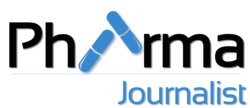Ionis and AstraZeneca Advance New Drug for NASH
Ionis Pharmaceuticals announced that it has licensed IONIS-AZ6-2.5-LRx, or AZD2693, to AstraZeneca following advancement of the drug into development. IONIS-AZ6-2.5-LRx is designed to inhibit an undisclosed target to treat patients with nonalcoholic steatohepatitis (NASH). In conjunction with this milestone, global, science-led biopharmaceutical company AstraZeneca will pay a $30 million license fee to Ionis. AstraZeneca will be responsible for further development and commercialization of IONIS-AZ6-2.5-LRx.
“This is the third drug to enter development under our strategic collaboration with AstraZeneca to discover drugs to treat cardiovascular, renal and metabolic diseases. IONIS-AZ6-2.5-LRx incorporates many of the advancements we have made in antisense technology, including our LIgand-Conjugated Antisense (LICA) and Generation 2.5 chemistry, and is the second drug in our collaboration to incorporate both modifications. By combining Generation 2.5 and LICA, we generate drugs that have the advantages of both higher affinity chemistry and efficient cell-specific targeting. This combination provides us with drugs that are substantially more potent than either Generation 2.5 or LICA alone, and supports administration of infrequent, very low doses, and even enables the potential for oral dosing,” said Brett P. Monia, chief operating officer, senior vice president of antisense drug discovery and translational medicine at Ionis Pharmaceuticals. “We are pleased with how quickly we moved IONIS-AZ6-2.5-LRx from target validation into development, exemplifying the efficiency of our antisense platform. AstraZeneca has played a strategic role in advancing this program forward by providing both preclinical and development expertise in NASH that has contributed to the rapid advance of this drug into development. We look forward to AstraZeneca moving this program swiftly into clinical testing and ultimately to the market.”
As IONIS-AZ6-2.5-LRx advances in development, Ionis may also receive up to $300 million in additional development and regulatory milestone payments, as well as tiered royalties up to the low teens from sales of the drug.

